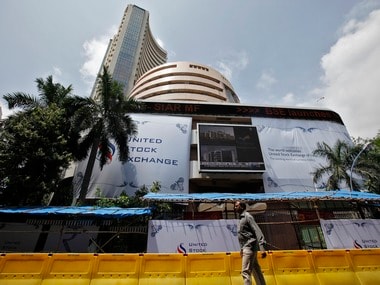Mumbai: When Fed taper fears jolted emerging markets in 2013, India was one of the worst hit and was forced to raise interest rates to underpin its tumbling markets. Fast forward to this year, and history has been turned on its head. Not only is the US central bank raising rates, but India is widely expected next week to be the first country in Asia to cut policy rates this year. And rather than being concerned at India’s falling policy rate premium over the United States, foreign investors are giving the country’s markets the thumbs up. India’s financial market are rallying and the country’s bonds are in demand, offering some of the best inflation-adjusted returns in Asia. Inflation, long a thorn in the economy, is at its lowest in five years, economic growth is picking up and the current account deficit is a fraction of its old self. Prime Minister Narendra Modi unveiled a national goods and services tax (GST) on 1 July, India’s biggest tax reform since independence in 1947, raising confidence among investors that other measures to boost the economy would follow. “The structural story for India remains pretty strong,” said David Cornell, chief investment officer of London-based Ocean Dial Asset Management, which argues India and other emerging markets will outperform over the next 12 months. [caption id=“attachment_3850455” align=“alignleft” width=“380”]  Reuters[/caption] India operates some capital controls, including on foreign investment. Foreign buyers have almost exhausted their quota in debt with net purchases of $21 billion this year - including record high inflows for a January-June period - after net sales of $6 billion last year.An auction of government and corporate bond quotas for foreign investors, which gives them the right to purchase additional debt, was heavily over-subscribed this week. They have bought a net $8.8 billion in shares, more than the combined $6.3 billion of the previous two years, helping push indexes, BSE Sensex and NSE Nifty, to record highs. Long positions in the rupee are the highest among major Asian currencies and almost double those of the second-placed Malaysian ringgit, a Reuters poll shows. “My view would not change as a result of a rate cut on Aug. 2. Rate cuts are likely to be justified by lower inflation and higher-trend growth rates in India due to reforms,” said Jan Dehn, head of research for Ashmore Capital, which has more than $57 billion under management. At a review on Wednesday, the Reserve Bank of India (RBI) is expected to cut its policy rate by 25 basis points to 6 percent, which would be its lowest level in more than six years. It would be the RBI’s first rate cut since October and the first in Asia since the Reserve Bank of New Zealand in December. Many other central banks have already signalled they are done with the long period of super easy policy that followed the global financial crisis, especially given the prospect of more U.S. rate rises and the potential for the European Central Bank to ease up on its bond purchases. No longer fragile India no longer resembles the “Fragile Five” country of 2013, when the RBI was forced to raise rates by 75 basis points to arrest foreign investment outflows. Other countries in this group, including Indonesia, Brazil, and South Africa, also took defensive policy measures at the time as their markets came under pressure. Indian consumer price inflation is now 1.54 percent, boosting the 10-year bond’s real interest rate to 4.9 percent, the highest in Asia and nearly double the rate of Indonesia, another popular emerging market investment destination. The rupee has rallied 5.6 percent against the dollar this year and volatility in the exchange rate is its lowest since mid-August, a reassuring signal for investors. The current account deficit has narrowed to just 0.6 percent of gross domestic product (GDP) from a record 4.8 percent in 2013, while foreign exchange reserves hit a record $389.1 billion as of 14 July. Economic growth is expected to rise to 7.3 percent in the fiscal year to March from 7.1 percent in the previous year, a Reuters poll shows. Negatives outweigh positives To be sure, a more aggressive monetary policy trajectory by the Fed or ECB would rattle emerging markets and within India a shift towards more populist measures ahead of elections that must be held by 2019 could unsettle foreign investors. The RBI is also reluctant to raise foreign debt limits to avoid the risk of sudden outflows later, potentially limiting further gains in the rupee. Indian shares are also relatively expensive, which may limit future gains. The benchmark NSE share index is trading around 21 times its 12-month forward price-to-earnings ratio, compared with a five-year average of 17.91. These negatives are not enough to outweigh the positives though, said Kenneth Akintewe, a senior investment manager for Aberdeen Asset Management in Singapore, who says India is one of his team’s bigger overweight positions. “India’s exposure in local currency emerging market funds is extremely low,” he said. “From a risk-adjusted perspective, it has been difficult to actually find another bond asset class that has been able to match the performance of Indian bonds.
India’s financial markets are rallying and the country’s bonds are in demand, offering some of the best inflation-adjusted returns in Asia.
Advertisement
End of Article


)




